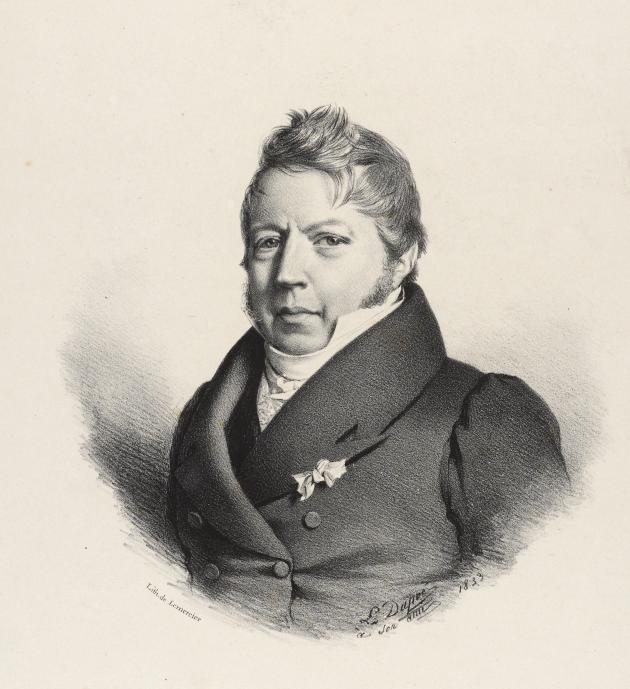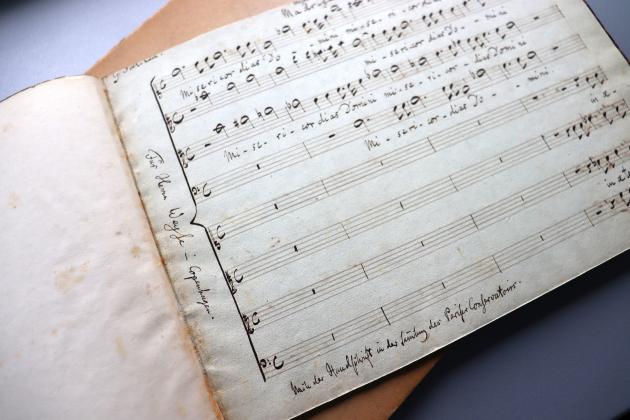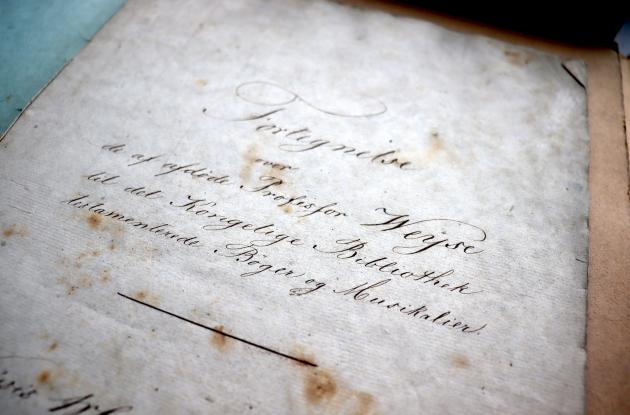Weyse's collection
Weyse was the first composer to bequeath his sheet music collection to Royal Danish Library. The donation formed a precedent and is a cornerstone of the library's collections.
When C.E.F. Weyse died in 1842, he had bequeathed his entire sheet music collection to Royal Danish Library. It was largely unseen before, as the library in principle did not have an actual sheet music collection. But Weyse came to form a precedent for Denmark's great composers over the years handing over their collections to Royal Danish Library. This means that you often only have to go to one place to find the majority of these composers' total output and also often archives. This applies, for example, to Niels W. Gade, JPE Hartmann, Carl Nielsen and a large number of 20th-century composers.

Photo: Louis Dupré
But what kind of music collection did Weyse hand in?
C.E.F. Weyse has certainly appreciated having a large sheet music and book collection about music at home, both for practical use and inspiration. Here his good friend, the lawyer and music lover Peter Grønland, plays a big role. Grønland's large collection of sheet music probably inspired Weyse, because he wrote in his autobiography: Grønland also arranged my reading, and I soon began to get a taste for scientific works. I read day and night
. It is also possible that a part of Grønland's things were taken over by Weyse upon his death in 1825, as evidenced by the collection's strong focus on music from the 18th century and even earlier.
We can get a little insight into how some of the collection came to be. Weyse corresponded with the music dealer Georg Pölchau, who offered copies and the sale of sheet music manuscripts, and Weyse, especially in the 1820s, probably commissioned works from him. Among other things, he probably asked for a copy of the Renaissance master G.P. da Palestrina's outstanding work Missa Papae Marcelli – it is one of the scores that we still find in his collection today. Pölchau succeeded in sending him a copy of this work based on a manuscript in Paris.
Facts: Weyse's collection
In general, the collection can be divided into a few groups, so that you also get an impression of the scope:
- 106 volumes of books on music
- 129 printed compositions by Danish and foreign composers
- 74 major and minor compositions by Weyse written by himself
- 78 other manuscripts, of which 16 by Danish and 62 by foreign composers.
The group of Weyse's own manuscripts is quite extensive and contains all his symphonies, a number of dramatic works, cantatas and choral movements, but not many songs.
It also turns out that in Weyse's collection there are a number of sheet music that originally belonged to the archaeologist Peter Oluf Brøndsted, who was active in Copenhagen social life especially from 1832 until his sudden death in 1842. Brøndsted also left behind a collection of sheet music, several copies of which ended up with Weyse.
Brøndsted and Weyse knew each other from social life. One day Weyse improvised for him on his piano, and Brøndsted became so interested that he asked to come again another time to hear me [Weyse] fantasizing again; but then also played a little for me, to convince me that he had not gone back. 'It's going to be awesome! never happen' I swore in my quiet mind, because he will play quite terribly.
Weyse's collection enters the library
It is possibly also inspired by Peter Grønland that Weyse decided to bequeath his collection to Royal Danish Library. Grønland's widow had donated sheet music and books to the library on several occasions in the 1820s and 30s, and Weyse's materials would therefore form part of an already established – albeit very small – sheet music collection.
In the library's archive is a copy of Weyse's will, dated 19 March 1841, in which he writes that the collection must belong to the library and that The printed works could then be lent on the usual terms; The manuscripts must not be borrowed, but only used in the Reading Room
.
In general, the collection has a conservative feel with the 18th century as the focus. Contemporary composers such as Beethoven, Schubert and Rossini are largely absent.

Photo: Det Kgl. Bibliotek
Weyse's collection – also today
Weyse's collection is still kept together in the library - at least as far as the sheet music is concerned. In recent times, the collection has formed a contributing basis for the publication of Weyse's symphonies, songs and piano works, and indeed also for the research that takes place in Weyse as a person and artist.
It was of immense value for the library to receive such a gift from Weyse, who was a very influential composer, and you can say that it formed a precedent for many years. The foremost Danish composers (and their descendants) usually left the works – not least the sheet music manuscripts – to the library.
